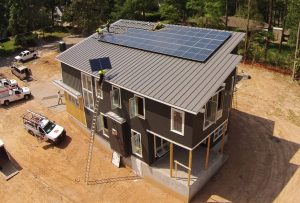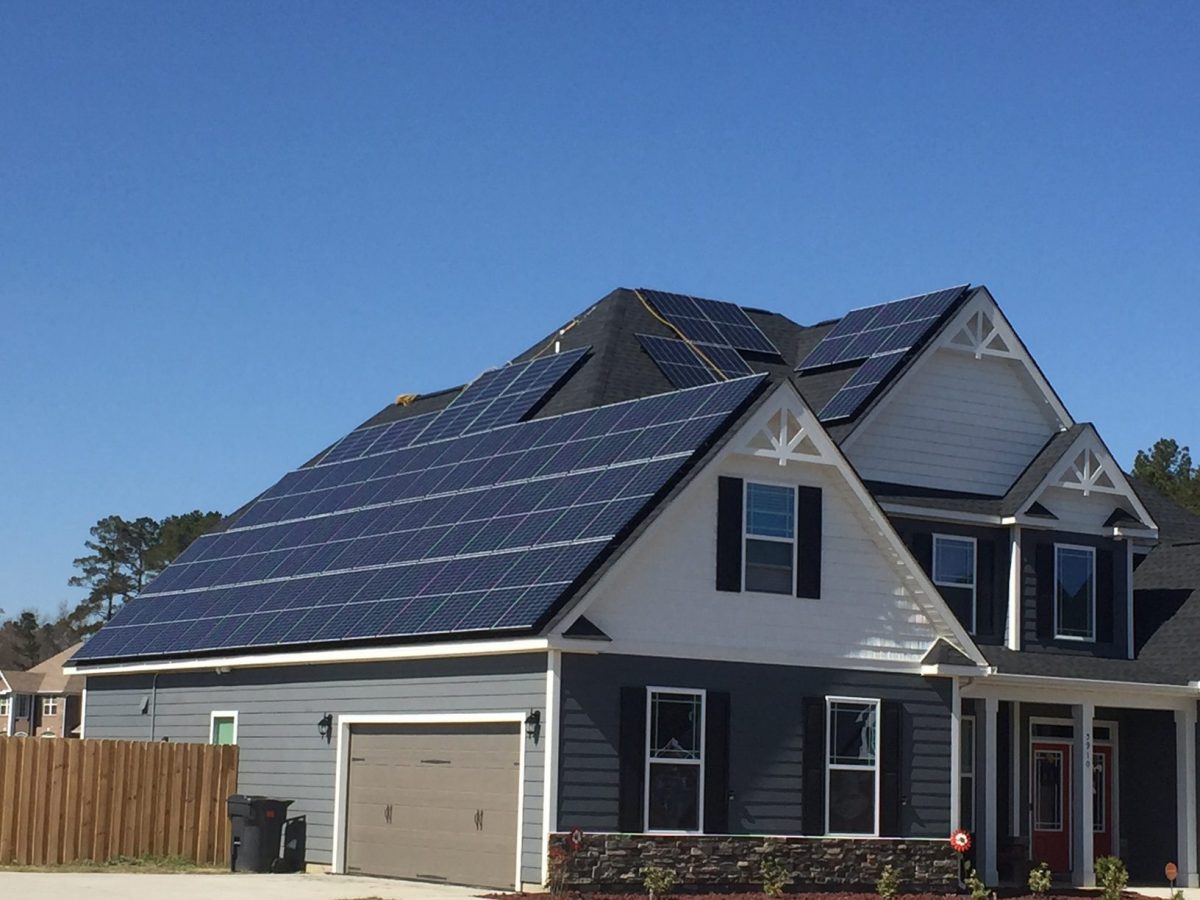kWh on your Utility Bill – What Does It Mean?
 Understanding energy usage can be pretty confusing. Once you get the hang of it, and start watching your monthly bill come in, you will feel empowered by the information you receive and your new-found ability to analyze the usage data. By the time you are done reading this, you will:
Understanding energy usage can be pretty confusing. Once you get the hang of it, and start watching your monthly bill come in, you will feel empowered by the information you receive and your new-found ability to analyze the usage data. By the time you are done reading this, you will:
- Have a better idea of how to measure a kilowatt hour
- Know what part of your home’s energy usage is costing you the most
- Understand how solar and battery backup can help you break free from dependence on your utility company
kW (kilowatt) vs. kWh (kilowatt hour)
A kilowatt (kW) is a measure of power and a kilowatt hour (kWh) is a measure of energy. An example of the relationship of kW to kWh, your microwave requires 1000W (power) to run, if you power the microwave for an hour you have used 1 kWh of energy. Put simply, think of kW as a car’s speed and kWh as the distance a car can go at that speed. Your home usage is based on kWh and the meter is pretty much always running! For example, even when you put your computer in “sleep” mode or your TV on standby, these appliances are still drawing power and creating a kWh cost, the kWh is what you see on your electric utility bill. Watch it closely, this information will help us determine the right sized solar and battery solution you need based on your energy needs.
Your Home’s Energy Use

Determining a solar system size that fits your needs and the number of batteries that will allow you to become more energy independent starts with understanding how your energy is used in your home. The average residential Duke Energy Carolinas customer used 35.5 kWh per day in 2016, and it is about the same today. The majority (about 24.3 kWh) of the total daily usage is gulped up by heating and cooling your home. We typically see about 11.2 kWh/day used by the refrigerator, stove, microwave, well pump, washer and dryer, combined. Each home is unique, but it is safe to say, about 11.2 kWh is equal to pretty much everything but heating and cooling.
Below are some stats to put usage into perspective:
• New high-efficiency refrigerators only use between 1-2 kWh per day
• A 60 Watt equivalent LED light bulb uses just 0.3 kWh if left on for 24 hours
• The iPhone 7 needs 0.012 kWh to reach a full charge
• Watching a 50″ flat screen TV for 2.5 hours uses approximately 0.375 kWh
• And finally, bringing in the bulk of usage, a 3-ton central air conditioner uses about 3.8 kWh for each hour it is on.
Sizing the right solar system based on your energy use
 A typical solar installation is 8kW-10 kW, though we have seen system sizes getting bigger, due in part to the lower cost of panels, better efficiency and the integration of new technology like battery backup. It is best practice to size a system to offset as much energy usage as possible, without oversizing the system. With net metering, you will obtain credits by providing your home’s excess energy to the utility grid. When you need more energy, for example when your A/C is running at night, you can use the credits. The trick here is that the utility company will wipe clean credits once a year. Typically, those credits will be erased just before (summer) peak air conditioning season! This is why an oversized system will be like giving the grid your electricity for free and expanding your payback timeline. For a great return on your solar investment, it is important to understand your energy usage, your energy goals and financial goals and plan accordingly. Yes Solar Solutions has the expertise to size your system properly and help you reach your goals. In addition to the lower panel costs and higher efficiency, with new battery technology, like Tesla Powerwall, a new element has been introduced, allowing for greater independence from your utility company.
A typical solar installation is 8kW-10 kW, though we have seen system sizes getting bigger, due in part to the lower cost of panels, better efficiency and the integration of new technology like battery backup. It is best practice to size a system to offset as much energy usage as possible, without oversizing the system. With net metering, you will obtain credits by providing your home’s excess energy to the utility grid. When you need more energy, for example when your A/C is running at night, you can use the credits. The trick here is that the utility company will wipe clean credits once a year. Typically, those credits will be erased just before (summer) peak air conditioning season! This is why an oversized system will be like giving the grid your electricity for free and expanding your payback timeline. For a great return on your solar investment, it is important to understand your energy usage, your energy goals and financial goals and plan accordingly. Yes Solar Solutions has the expertise to size your system properly and help you reach your goals. In addition to the lower panel costs and higher efficiency, with new battery technology, like Tesla Powerwall, a new element has been introduced, allowing for greater independence from your utility company.
Tesla Powerwall – A Game Changer
 You may want to size your solar system a little larger if you are planning on adding solar storage to your home. Tesla Powerwall can be mounted inside a garage or outside the home, weighs about 276 pounds and stands about 4 feet tall. The battery has up to 13.5 kWh of stored energy capacity. Essentially, one Powerwall will cover that “everything but heating and cooling” usage. We call these critical loads. The power output is 5kW continuous and about 7kW peak. Once again, the heating and cooling units would use up the battery storage pretty quickly. That said, you can stack and connect up to 10 units and they can be programmed based on your usage. A Tesla Powerwall can get you close to off-grid. At this point, you still need to be connected to the grid with a Powerwall. There are off-grid options like those from Outback, similar to the set up here in the Yes Solar Solutions office. The Outback off-grid system is a true backup option as the system uses traditional lead-acid batteries and are not designed for cycling. Telsa Powerwall however is built with cycling in mind, you can store and drain energy daily as needed.
You may want to size your solar system a little larger if you are planning on adding solar storage to your home. Tesla Powerwall can be mounted inside a garage or outside the home, weighs about 276 pounds and stands about 4 feet tall. The battery has up to 13.5 kWh of stored energy capacity. Essentially, one Powerwall will cover that “everything but heating and cooling” usage. We call these critical loads. The power output is 5kW continuous and about 7kW peak. Once again, the heating and cooling units would use up the battery storage pretty quickly. That said, you can stack and connect up to 10 units and they can be programmed based on your usage. A Tesla Powerwall can get you close to off-grid. At this point, you still need to be connected to the grid with a Powerwall. There are off-grid options like those from Outback, similar to the set up here in the Yes Solar Solutions office. The Outback off-grid system is a true backup option as the system uses traditional lead-acid batteries and are not designed for cycling. Telsa Powerwall however is built with cycling in mind, you can store and drain energy daily as needed.
What to Do With The Solar Data
The next step is to take all your data and make changes in your energy consumption where you can. Compile the monthly bills and identify what you want to be able to run in your house, without help from the grid. When you have that information, or really at any point in the info gathering process, give us a call, 919-459-4155, and we can walk you through it. We will design a customized system based on your kWh usage, your storage and energy needs. We make solar simple and look forward to talking to you.
